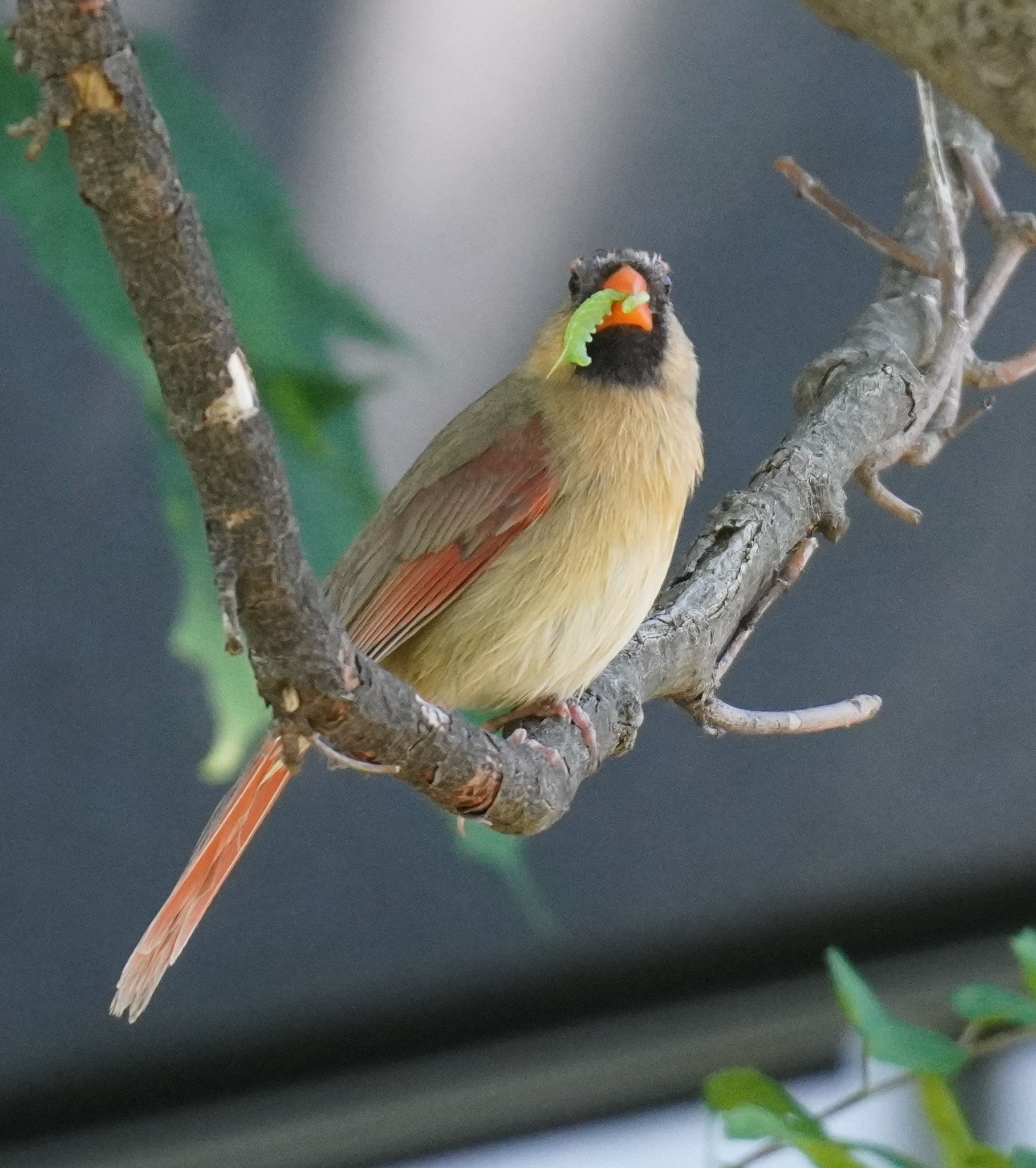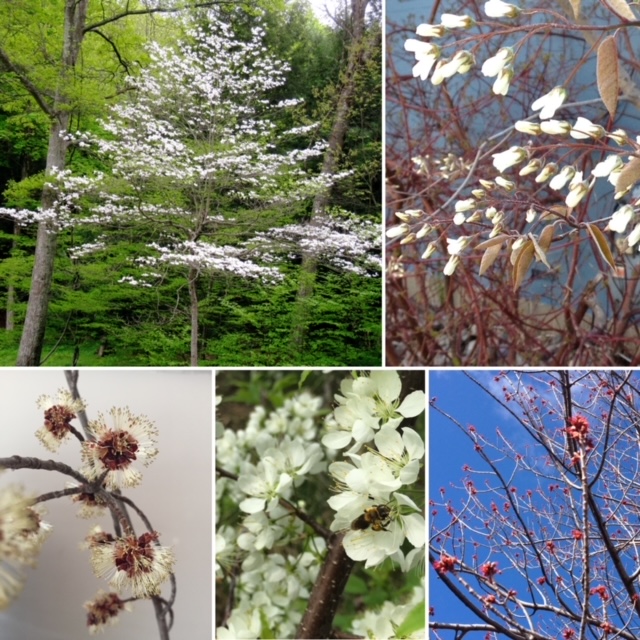by Christine Earnshaw
Globally and locally, pollinator populations are in steep decline. Although this reality is alarming, there are actions we can all take to reverse biodiversity loss and support pollinators and their habitat. By regenerating small patches of residential yards and public greenspaces into ecologically functional states, we can create habitats that pollinators and other wildlife species depend on.
Why are native trees and shrubs important for pollinators?
Trees, shrubs, and plants have co-evolved with insects and are necessary for insects’ survival. Trees’ flowers, particularly in spring, are a critical forage source for bees, providing nutrient-rich pollen and nectar.
The vast majority of terrestrial bird species in North America feed insects to their young. Native tree species are hosts to various native butterflies and moths, and their leaves are needed for caterpillars to make their chrysalises.
Pollinators, in turn, play a key role in the survival of a wide variety of trees, shrubs and flowering plants since trees and shrubs need insects and birds for pollination.
What can we do to support pollinators and wildlife habitat?
We can all contribute to providing habitat for pollinators and other wildlife. Here are some things we can all do.
- Protect and nurture existing native trees and shrubs.
- Plant native trees and shrubs in our home garden or community-stewarded public greenspaces. If possible, grow understory plants as well to form layered plant communities.
- Keep leaves and twigs where they fall, or rake them up and scatter them over garden beds to create an insulating layer of mulch, which will decompose and improve the soil’s nutrient content, texture, and moisture-holding capacity. This will provide a place for insects to live over the winter.
- Lobby for city policies that enhance biodiversity and natural landscapes, and equitable distribution of greenspace across our city.
Which native trees and shrubs are the most beneficial?
Entomologist Doug Tallamy says that if you could only plant one tree, a native oak tree is the best choice to support hundreds of native insect species. In particular, oak trees are important hosts for caterpillars. Multiple bird species including Black-capped chickadees need caterpillars to raise their young. Also, trees in the prunus family (Wild Plum, Chokecherry, Pin Cherry, Black Cherry) host hundreds of insects.
The trees listed below offer a place for beneficial insects to hide and overwinter, as well as being host plants and early sources of pollen for spring insects.
- Red Oak (Quercus rubra)
- Red maple (Acer rubrum)
- Chokecherry (Prunus virginiana)
- Pin cherry (Prunus pensylvanica)
- Hackberry (Celtis occidentalis
- Tuliptree, (Liriodendron tulipfera)
But other species are beneficial too. According to Lorraine Johnson, an author and gardener, some of the best early-blooming plants for pollinators are native trees and shrubs, such as willows, viburnums, and dogwoods.
Possibilities are everywhere
Potential pollinator habitat is all around us. By naturalizing and restoring our urban landscapes, we can collectively create more habitat and support a wide range of native pollinators and other wildlife. This in turn makes our cities healthier, more beautiful, and more resilient.
Christine Earnshaw is a co-founder of Tree Fest Ottawa, a local non-profit organization dedicated to raising awareness and appreciation for trees and our urban forests since 2015.


